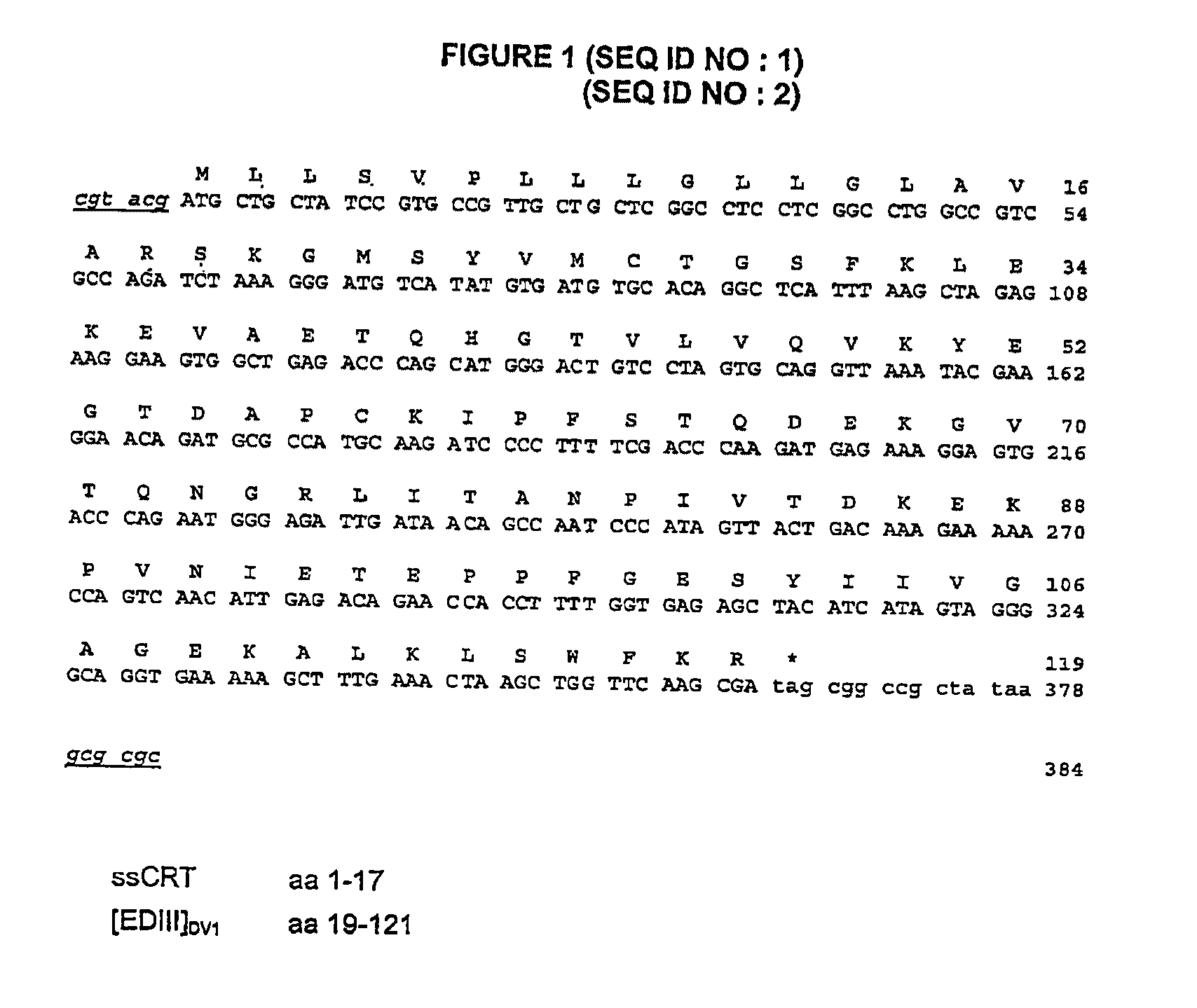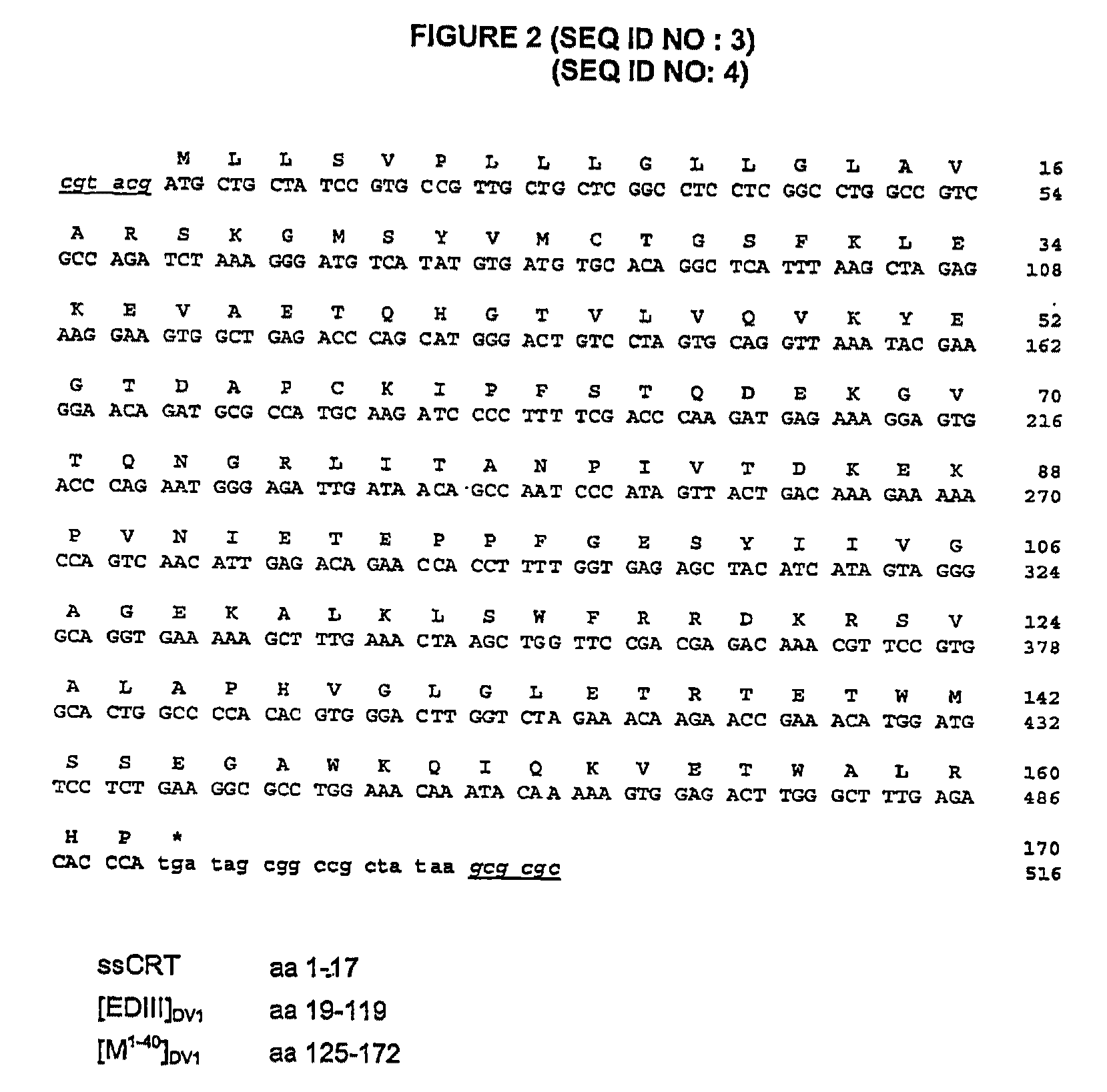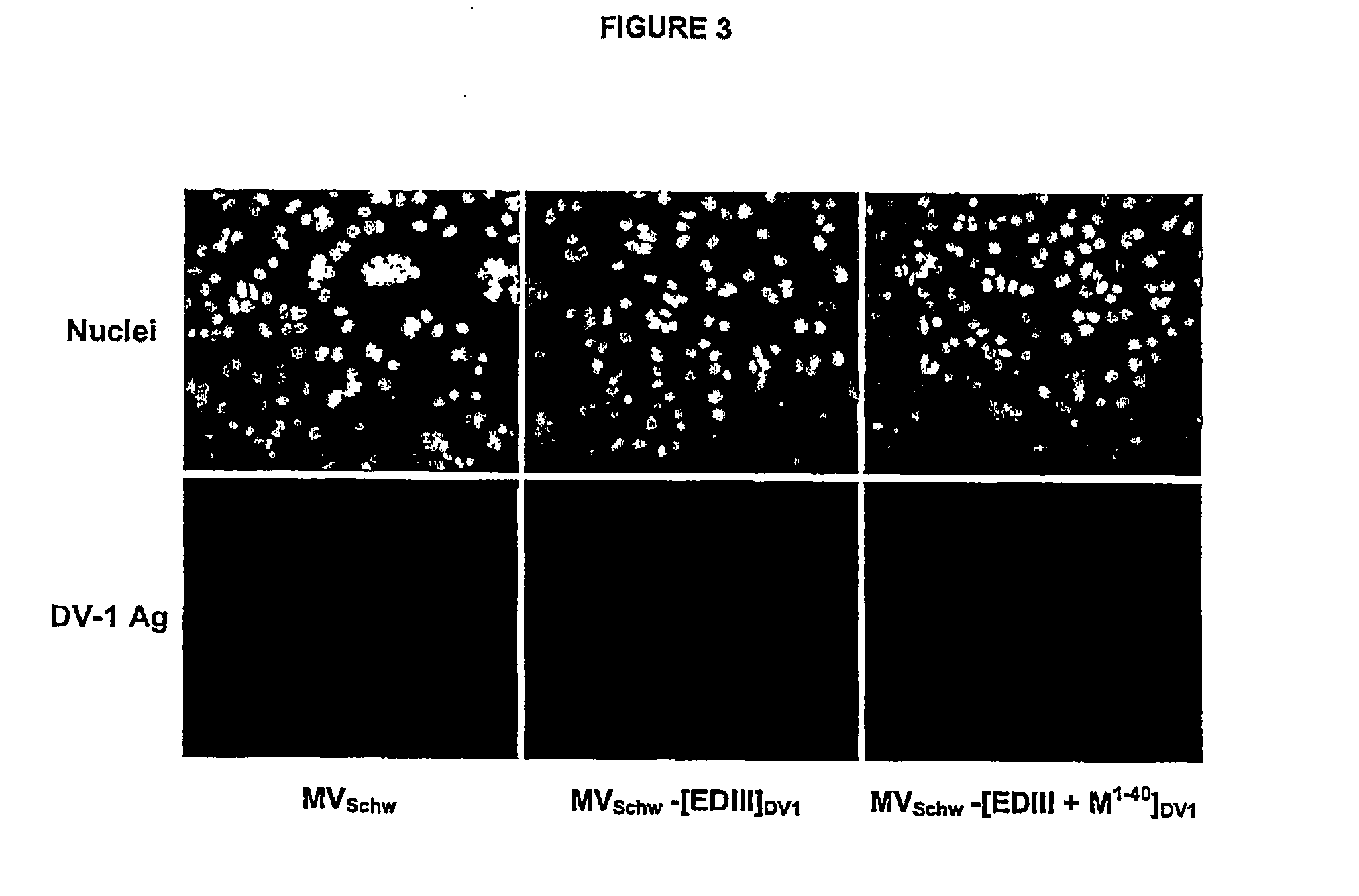Chimeric poly peptides and the therapeutic use thereof against a flaviviridae infection
a technology of flaviviridae and polypeptides, applied in the field of chimeric polypeptides, can solve the problems of unresolved development of a tetravalent vaccine against dengue virus, unresolved problems based on murine models, and difficult to obtain the balance between chimeric viruses for uniform immunization,
- Summary
- Abstract
- Description
- Claims
- Application Information
AI Technical Summary
Benefits of technology
Problems solved by technology
Method used
Image
Examples
example 1
The Recombined Measles Virus MVSchw-[EDIII+M1-40]DV-1 as a Prototype for a Candidate Vaccine Against Dengue (PTR156)
[0163]Described in FIGS. 1 and 2, two immunogenic constructs based on the one hand on the capacity of domain III of the envelope E glycoprotein of the dengue virus to induce neutralizing antibodies and on the other hand on the involvement of the ectodomain of the membrane M protein (M1-40) in viral pathogenicity (apoptosis) were inserted into the genome of the attenuated measles virus (Schwarz strain) (MVSchw). The viral sequences were under the dependency of the signal peptide of calreticulin to allow them to be targeted into the secretion pathway. The expression of the [EDIII]DV-1 and [EDIII+M1-40]DV-1 sequences by the recombined viruses MVSchw was verified in infected Vero cells by indirect immunofluorescence using a polyclonal HMAF mouse serum directed against DV-1 (FIG. 3). Secretion of the EDIII and EDIII antigenic domains fused to the M1-40 sequence (with the in...
example 2
Construction of Chimeric Polypeptides Optimized for Expression in Mammals
[0170]In the present example, the inventors have developed novel antigenic constructs useful against a Flaviviridae infection.
[0171]These novel chimeric polypeptides are based on an antigen composed of a tetramer of the four EDIII domains of the four serotypes of the dengue virus, fused together and to one or the other of the cytotoxic apoptoM sequences shown in FIG. 30.
[0172]Thereafter, these chimeric polypeptides optimized for expression in a mammal were inserted into the genome of the attenuated measles virus, Schwarz strain, (MVSchw) viral strain. FIGS. 15 to 29 show the amino acid sequences of five preferred chimeric polypeptides and the polynucleotides encoding them.
[0173]These chimeric polypeptides were constructed using the following optimization conditions:
[0174]Optimization information for these sequences:[0175](Cai No=0.806, mean % GC=53.46, GC distribution: homogeneous about 50%);[0176]elimination o...
PUM
| Property | Measurement | Unit |
|---|---|---|
| temperature | aaaaa | aaaaa |
| temperature | aaaaa | aaaaa |
| polarity | aaaaa | aaaaa |
Abstract
Description
Claims
Application Information
 Login to View More
Login to View More - R&D
- Intellectual Property
- Life Sciences
- Materials
- Tech Scout
- Unparalleled Data Quality
- Higher Quality Content
- 60% Fewer Hallucinations
Browse by: Latest US Patents, China's latest patents, Technical Efficacy Thesaurus, Application Domain, Technology Topic, Popular Technical Reports.
© 2025 PatSnap. All rights reserved.Legal|Privacy policy|Modern Slavery Act Transparency Statement|Sitemap|About US| Contact US: help@patsnap.com



